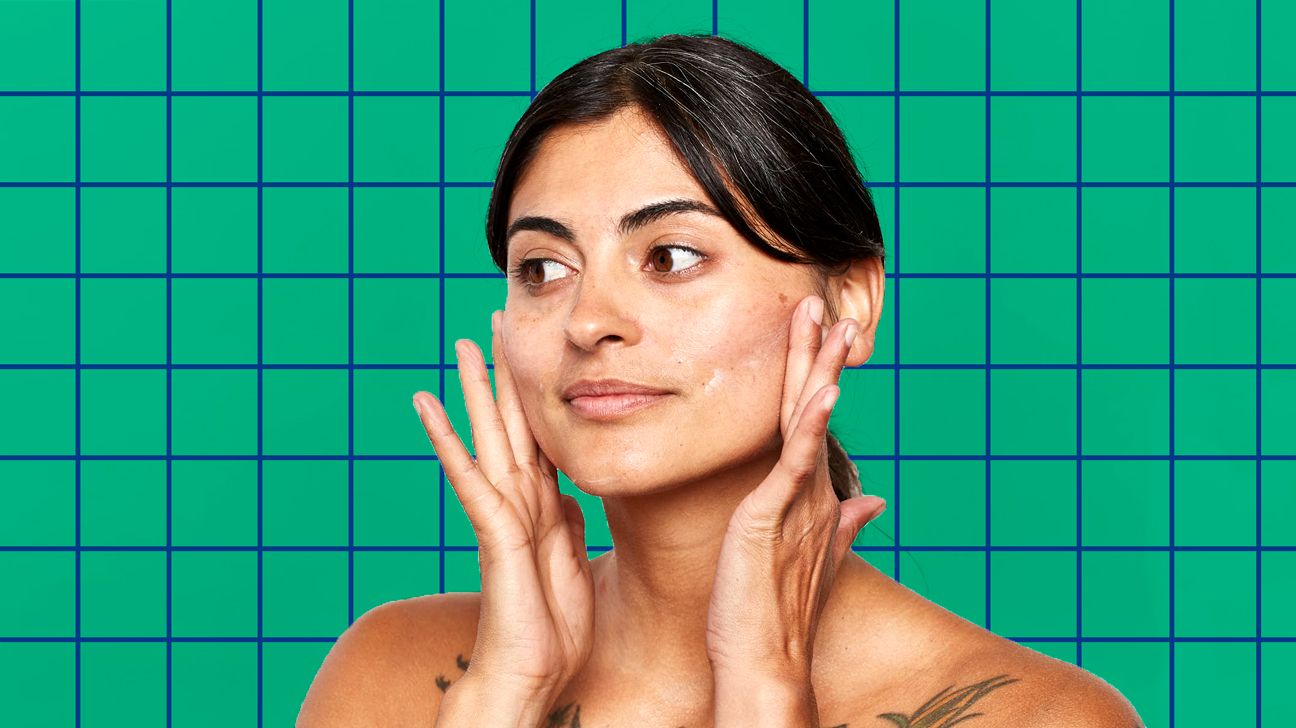Skin care doesn’t have to be costly or complicated. In fact, you may already own one of the hardest working, multipurpose, DIY products on the market.
Drum roll, please… Vaseline, which is the popular brand name for petroleum jelly. The ooey gooey stuff makes for a safe and effective skin moisturizer, but there are some important things to consider before you oil up.
Vaseline’s moisturizing potential comes from its occlusive properties — basically acting as a seal, keeping preexisting moisture in and hostile environmental agents out.
Studies have found that petroleum jelly doesn’t actually add moisture to the skin, but it’s significantly more effective at reducing the amount of moisture your skin loses compared to other DIY “moisturizers,” like olive and mineral oils.
Depending on your skin care needs, petroleum jelly offers a wide range of potential benefits that go further than skin-deep.
Seals in moisture
If the ingredients in most moisturizers make you break out, you’ll be pleased to discover that Vaseline locks in your skin’s own natural hydration. Put it on before bedtime to maximize its softening and hydrating potential.
Removes pesky eye makeup
The petroleum in Vaseline makes it oily AF and therefore very effective at removing stubborn makeup, like waterproof mascara. Plus, it’s safe to use around the sensitive eye area.
As one dermatologist notes, all this makes it an excellent option to add to your nighttime routine, since the residual product will seal in hydration while you sleep.
Heals cuts
The buffering action of Vaseline makes it an effective barrier between your boo-boos and bacteria, which allows minor cuts and scrapes to heal more quickly.
Gets your #BrowsOnPoint
No need to splurge on fancy brow kits. A little dab of Vaseline will do the trick to groom your brows into place and boost the appearance of fullness.
Heals chapped lips
Harsh weather can wreak havoc on your lips — talk about snap, crackle, and pop. Ouch! Vaseline keeps your pout perfectly kissable by keeping moisture in, without any perfumes or funky flavors to worry about.
Psoriasis flare-ups are more likely to happen if your skin is dry. Applying Vaseline in areas where you often see psoriasis symptoms is a good proactive measure.
While it may not be practical for everyday use, you can seal moisture in using Vaseline on your face without irritating your skin.
Psoriasis
Dry skin won’t do your psoriasis any favors. Use vaseline to proactively protect the areas that are prone to flare-ups. While it may not make sense to use every day, it’s a good way to keep your skin hydrated without any irritating additives.
Rosacea
While the symptoms and triggers of rosacea are highly individual, research has shown that the occlusive quality of petroleum jelly helps protect areas of the skin that become red and inflamed. Not only is Vaseline safe to use, it may even speed recovery.
Revitalize a lackluster complexion
While Vaseline won’t smooth wrinkles or minimize your pores, it’s worth noting that petroleum jelly was found to increase peptide regulation on the skin’s surface.
People shell out more than a few bucks for fancy creams that list peptides as one of their hero ingredients for a firmer, more radiant complexion. Peptides or not, Vaseline helps keep your skin hydrated, and quenched skin is better skin.
There are some instances where you should hold off on applying Vaseline.
Steer clear post-sun
If you’re looking for something to soothe your skin after a too many hours in the sun, DO NOT reach for your tub of Vaseline.
The oily formulation can actually lock in heat and further any sun damage to the skin. While the label indicates Vaseline can be used to treat minor burns, this is only the case AFTER these wounds have begun to heal — like, many hours after the fact.
Hard pass for acne as well
Petroleum jelly based products like Vaseline can actually bring on a breakout, according to the American Academy of Dermatologists. So, definitely DO NOT reach for the Vaseline if your skin’s prone to acne, or if you feel a breakout on its way.
Yep, it’s even encouraged. If your skin tends to border on crocodilian, Vaseline can help alleviate the discomfort with its moisture-locking properties. Plus, it’s safe to use even on sensitive areas, like the skin around your eyes and lips.
While it’s perfectly safe to use Vaseline on oily skin, adding oil to oil may not give you the balancing results you’re after. Remember, Vaseline locks in moisture — which includes any excess oil production or sebum.
Yes, Vaseline is basically a go-to for sensitive skin types. According to the manufacturer, Vaseline is noncomedogenic, which means it shouldn’t irritate your skin.
- Vaseline isn’t exactly lightweight, which can make it cumbersome to wear, especially underneath makeup.
- The potent occlusive properties of Vaseline not only lock in moisture, but anything else that might be hanging around, like dirt or bacteria. So, make sure skin is extra clean before applying.
- Vaseline doesn’t provide any additional moisture to the skin. It uses the moisture already in the skin. Vaseline alone won’t be enough to make a naturally dry complexion dewy.
- While your skin may look all shiny and new after applying it, Vaseline is slow to absorb and doesn’t really nourish your skin with any potentially beneficial ingredients.
- In rare cases, peeps with sensitivities to petroleum products have experienced allergic reactions to Vaseline.
Provided you don’t have acne, a sunburn (or any kind of burn), or an underlying aversion to petroleum, Vaseline can make a great and cost-effective addition to any skin care regimen. Just don’t expect any miracles.


